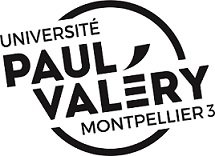Design and Production of a Patient Guide to Support Return to Work after Breast Cancer: An Application of Intervention MappingConception et production d’un guide patient pour accompagner la reprise du travail après un cancer du sein : une application de l’Intervention Mapping
Design and Production of a Patient Guide to Support Return to Work after Breast Cancer: An Application of Intervention MappingConception et production d’un guide patient pour accompagner la reprise du travail après un cancer du sein : une application de l’Intervention Mapping
Résumé
Aims. Return to work (RTW) after breast cancer is a complex process that questions the individual trajectories of patients and
stakeholders. Program planning in this context requires to rely on appropriate method like Intervention Mapping (IM) which
encompasses such complexity. Aim of the methodological study is to describe an application of IM for both the design and
production of a patient guide supporting RTW after breast cancer.
Procedure. According IM, the guide was co-constructed with a Community Advisory Board (CAB) of stakeholders (patients/
associations, health professionals, companies, institutions) after considering other options (interactive website, application
mobile). The design was done with empirical and theoretical anchoring, guided here by an Ecosystem Process of Change
model. A communication agency was chosen to produce the document. Pre-tests were conducted with a representative panel
of the target audience to assess the different prototypes elaborated, using questionnaires and a focus group.
Results. The final structure of the guide is presented with comments in order to concretely illustrate the management of IM steps 3
and 4. The final structure of the guide is presented, along with a description of its components that target women (according
Prochaska et Di Clemente’s stages of change) and their environment (by use of levers they may activate). The results of the
pre-test led to the simplification of the guide and its structure.
Conclusion. IM allows a rich integration of experiential knowledge in the planning of complex health and public health programs.
The development of the guide has attempted to integrate its aspects, in particular to promote both its implementation and its
effects. Reflections are brought about the realistic evaluation of such complex interventions.
Objectif. Le retour au travail (RAT) après un cancer du sein est un processus complexe qui interroge les trajectoires individuelles
des patients et celle des acteurs dans leur environnement (ou écosystème). La planification d’une intervention dans ce contexte
nécessite une méthodologie appropriée qui intègre cette complexité, à l’image de l’Intervention Mapping (IM). L’objectif de
l’article est de décrire une application de l’IM pour la conception et la production d’un guide patient de RAT après un cancer
du sein.
Matériel et méthodes. Suivant le protocole d’IM, le guide a été coconstruit avec un comité stratégique (COS) de parties-prenantes
(patientes/associations, professionnels de santé, entreprises, institutions) après avoir envisagé d’autres options (site web-interactif, application mobile). La conception s’est faîte dans une double démarche d’ancrage empirique et théorique, guidée ici par un
modèle Ecosystémique et Processuel du Changement. Une agence de communication a été choisie pour produire le document.
Les prototypes ont été évalués à travers différents pré-tests conduits auprès d’un panel représentatif du public cible, associant
des questionnaires et un focus groupe utilisateur.
Résultats. La structure finale du guide est présentée de façon commentée afin d’illustrer concrètement le déroulé des étapes 3 et 4 de
l’IM. Le descriptif des composantes d’intervention visant les femmes (de façon personnalisée à travers les stades de changement de
Prochaska et Di Clemente) et leur environnement (via des dispositifs enclenchés par leur intermédiaire). Les résultats du pré-test
ont conduit à simplifier le guide et sa structure.
Conclusion. L’IM permet une intégration riche des savoirs expérientiels dans la planification des interventions complexes en santé/
santé publique. Le développement du guide a tenté d’intégrer ces aspects, notamment pour favoriser son implantation et ses effets.
Des réflexions sont amenées quant à l’évaluation réaliste de tels dispositifs.
| Origine | Fichiers éditeurs autorisés sur une archive ouverte |
|---|

